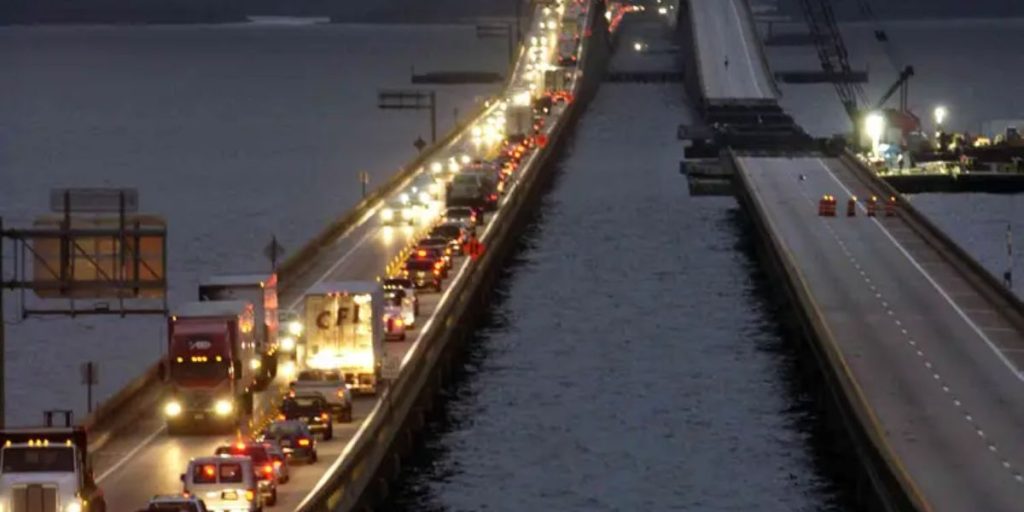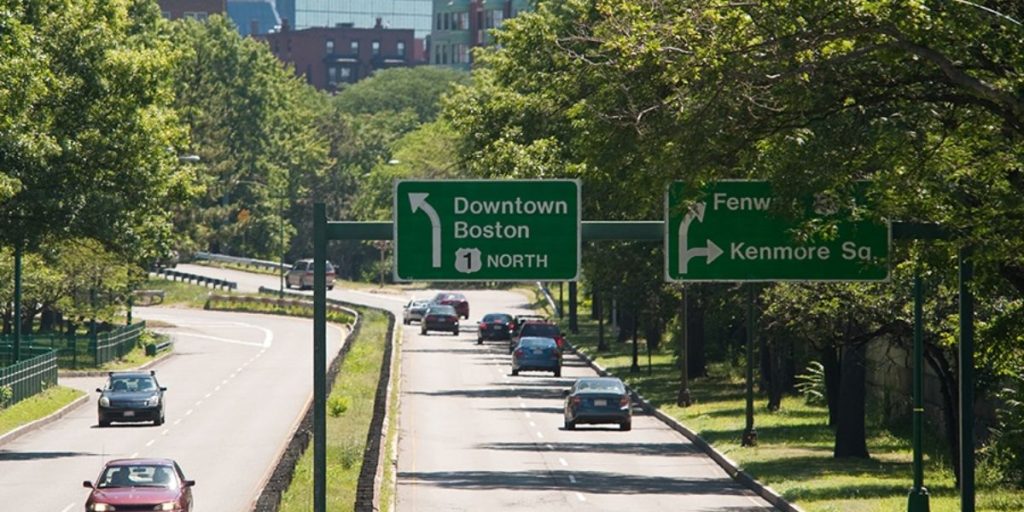Bridges are vital components of our transportation infrastructure, connecting cities, states, and regions. While many bridges ensure safe passage for millions daily, at the same time some present significant risks due to structural issues, age, or challenging environmental conditions. In this article, we explore the top six most dangerous bridges in America, each with its unique set of hazards and challenges.
No. 1 Storrow Drive WB over Storrow Drive EB (Storrow Drive Tunnel), Boston
Average Daily Traffic Volume(ADT): 57,770; SR(sufficiency rating): 0%
This double-deck roadway overlooking Back Bay has been a source of frustration since its inception in 1951. The problem is that the upper deck’s pavement is excessively thick, putting strain on the corroding steel beams that support the structure from below. Several rounds of costly interim repairs (most recently in 2012-13) have kept the artery open, but they are only stopgap measures to extend its life until 2018, while longer-term alternatives are considered.

No. 2 (tie): US Route 1/9 across the Passaic River/NJ Turnpike (Pulaski Skyway), Newark, NJ
ADT: 61,500; SR: 2%
During Herbert Hoover’s presidency, the steel construction measuring 3 ½ miles was constructed with a projected traffic volume of 5,500 automobiles per day. Eighty years later, its capacity requirements have risen more than tenfold, and its structural steel and concrete are rusting. A $1 billion rehabilitation project underway from now until 2016 should address these and other difficulties along the Skyway, including this 550-foot portion that spans 135 feet above the Passaic River.
No. 2 (tie) US Route 1/9 across the Hackensack River (Pulaski Skyway), South Kearny/Jersey City, NJ
ADT: 61,500; SR: 2%
The Skyway’s other 550-foot river crossing will also benefit from the $1 billion renovation, which will include a deck replacement, concrete and steel support upgrades, and improved seismic performance. Beginning in 2014, the Skyway will be closed to northern traffic for 24 months for repairs, although southbound traffic will continue to use the bridge.
No. 4 NY Route 907C (Belt Parkway) Mill Basin Bridge, Brooklyn, NY
ADT: 142,600; SR: 3%
This Brooklyn span, which was opened in 1940, is the only drawbridge on New York’s Belt Parkway. Its out-of-date design has created inconveniences, including a large traffic bottleneck in July 2012 when the bridge remained stuck in the up position for over an hour. The construction of a new, 60-foot-tall fixed bridge to replace the Mill Basin Bridge has just begun; motorists will continue to utilize the existing structure until the new one is completed in 2017.

No. 5 NY Route 987D (Saw Mill River Parkway) via NY Route 907K (Cross County Parkway), Yonkers, NY
ADT: 73,000; SR: 5.3%
In a May 2011 inspection, this 1940 concrete bridge received the lowest possible rating for its structural evaluation—an assessment of its overall condition—allowable for a bridge that is still open to traffic. The Federal Highway Administration defines a structural evaluation score of 2 as “requiring high priority of replacement,” when compared to a bridge built to current requirements.
No. 6 SR 520 over Lake Washington in Seattle
ADT: 97,870; SR: 9%
The world’s longest floating bridge spans the 200-foot depths of Lake Washington, measuring over 1½ miles in length. However, time has taken its toll on the 50-year-old engineering marvel: technicians have fixed 30,000 feet of fissures in its concrete pontoons, and its design renders it vulnerable to closure during windstorms. A bigger, stronger replacement is now under development, and when completed in 2015, it will be the world’s longest floating bridge.
Conclusion
While these bridges serve as crucial links in the nation’s transportation network, their inherent dangers cannot be overlooked. Infrastructure improvements, regular inspections, and public awareness are essential to addressing and mitigating the risks associated with these bridges. Travelers must exercise caution and adhere to safety guidelines when navigating these critical but potentially hazardous structures.